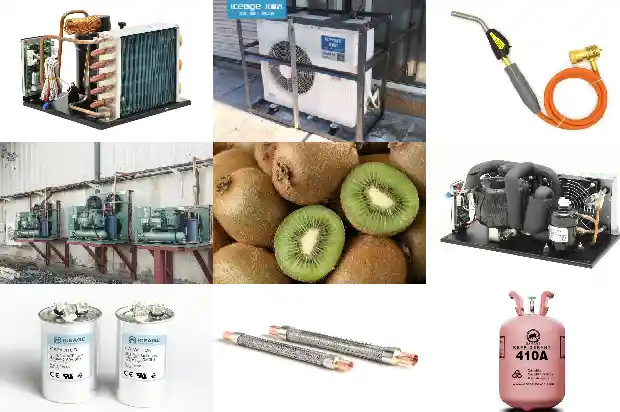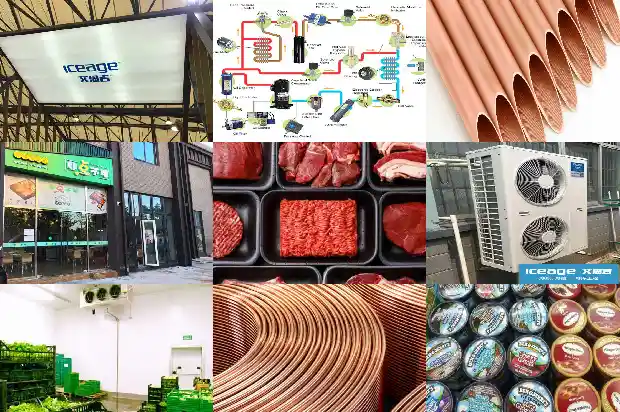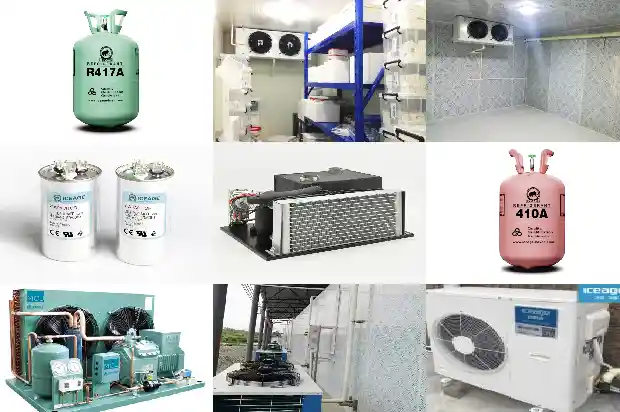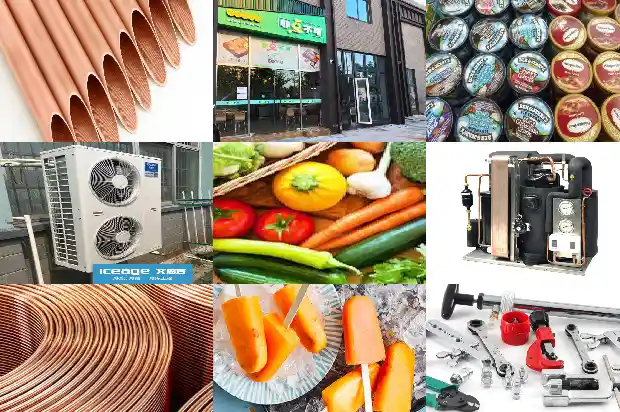Startup, Shutdown Procedures and Accident Handling of Various Pumps
2025-01-14
A pump is a device used to convert the mechanical energy of the prime mover into the kinetic energy and pressure energy of the liquid. Pumps are generally used to transport liquids, which can be sent from a lower - positioned place to a higher - positioned place, or from a container with lower pressure to a container with higher pressure.
How are the models of water pumps generally represented?
The models of water pumps are quite complex and not unified. A commonly used water pump model consists of three parts, and the meaning of each part is as follows:
(1) The first part is a number, which represents the suction pipe diameter (mm) reduced to 1/25 of the original size.
(2) The second part takes the first letter of the Chinese pinyin, representing the structural type of the water pump.
(3) The third part is a number, which represents the specific speed reduced to 1/10 of the original size and rounded to an integer.
The models of water pumps are quite complex and not unified. A commonly used water pump model consists of three parts, and the meaning of each part is as follows:
(1) The first part is a number, which represents the suction pipe diameter (mm) reduced to 1/25 of the original size.
(2) The second part takes the first letter of the Chinese pinyin, representing the structural type of the water pump.
(3) The third part is a number, which represents the specific speed reduced to 1/10 of the original size and rounded to an integer.
The main performance parameters of water pumps and their meanings: The performance parameters are head, flow rate, rotational speed, shaft power, and efficiency.
Head: It refers to the energy increase value obtained by a unit weight of liquid after passing through the pump. The head is also called total head, overall head, or total water head, represented by H, with the unit of meters of water column.
Flow rate: It refers to the amount of liquid supplied by the water pump per unit time. It can be expressed by volume flow rate Q, with the unit of cubic meters per hour or liters per second. It can also be expressed by weight flow rate Q, with the unit of kilograms per second or tons per hour.
Rotational speed: That is, the number of revolutions of the water pump shaft per minute, represented by n, with the unit of revolutions per minute.
Shaft power: That is, the power transmitted from the prime mover to the pump shaft of the water pump, represented by N, with the unit of watts or kilowatts.
Efficiency: The shaft power is not fully utilized by the water pump, and part of it is lost. The ratio of the effective power to the shaft power is called the pump efficiency, represented by the symbol η.
Head: It refers to the energy increase value obtained by a unit weight of liquid after passing through the pump. The head is also called total head, overall head, or total water head, represented by H, with the unit of meters of water column.
Flow rate: It refers to the amount of liquid supplied by the water pump per unit time. It can be expressed by volume flow rate Q, with the unit of cubic meters per hour or liters per second. It can also be expressed by weight flow rate Q, with the unit of kilograms per second or tons per hour.
Rotational speed: That is, the number of revolutions of the water pump shaft per minute, represented by n, with the unit of revolutions per minute.
Shaft power: That is, the power transmitted from the prime mover to the pump shaft of the water pump, represented by N, with the unit of watts or kilowatts.
Efficiency: The shaft power is not fully utilized by the water pump, and part of it is lost. The ratio of the effective power to the shaft power is called the pump efficiency, represented by the symbol η.
The working principle of a centrifugal pump:
The working principle of a centrifugal pump is that when the pump is filled with fluid, the impeller rotates, driving the fluid inside the impeller to rotate together, generating centrifugal force. The fluid at the center of the impeller is thrown to the outer edge of the impeller under the action of centrifugal force, so a vacuum is formed at the center of the impeller. Under the action of this pressure difference, the fluid continuously flows into the impeller along the suction pipe for replenishment. In this way, the fluid that obtains energy from the impeller flows into the volute or diffuser, where part of the kinetic energy is converted into pressure energy, and then it is discharged along the pressure pipeline. Thus, the pump can work continuously.
The efficiency of a centrifugal pump: A centrifugal pump has mechanical efficiency, volumetric efficiency, hydraulic efficiency, and overall efficiency.
Mechanical efficiency: It is the ratio of the power effectively absorbed by the impeller and converted into head to the shaft power of the pump.
Volumetric efficiency: The effective flow rate at the pump outlet is smaller than the flow rate of the liquid passing through the impeller. This flow rate ratio is the volumetric efficiency.
Hydraulic efficiency: The ratio of the effective total head to the theoretical head is called the hydraulic efficiency or flow efficiency.
Overall efficiency: The overall efficiency is equal to the product of the mechanical efficiency, volumetric efficiency, and hydraulic efficiency.
What are the adjustment methods of a centrifugal pump and how do they work?
Adjustment methods: Valve - changing adjustment, speed - changing adjustment, and changing the number of operating pumps.
Valve - changing adjustment: It is to adjust the flow rate of the pump by using the opening size of the valve on the pipeline for transporting the liquid. It uses the method of changing the resistance of the pipeline system to change the pipeline curve, so that its operating point changes to obtain the required flow rate.
Speed - changing adjustment: By changing the rotational speed of the water pump, the characteristic curve of the pump is raised or lowered, so that the intersection position of the characteristic curve of the pump and the characteristic curve of the pipeline resistance changes, and the flow rate of the pump also changes accordingly.
Changing the number of operating pumps: In the common - header feed - water system and the circulating system, the flow rate can be adjusted by changing the number of operating pumps. The operation method is usually to determine the number of operating pumps according to the requirements of the boiler for the feed - water volume and pressure, or according to the requirements of the circulating water volume and the vacuum of the condenser.
Maintenance during the operation of the water pump:
The working principle of a centrifugal pump is that when the pump is filled with fluid, the impeller rotates, driving the fluid inside the impeller to rotate together, generating centrifugal force. The fluid at the center of the impeller is thrown to the outer edge of the impeller under the action of centrifugal force, so a vacuum is formed at the center of the impeller. Under the action of this pressure difference, the fluid continuously flows into the impeller along the suction pipe for replenishment. In this way, the fluid that obtains energy from the impeller flows into the volute or diffuser, where part of the kinetic energy is converted into pressure energy, and then it is discharged along the pressure pipeline. Thus, the pump can work continuously.
The efficiency of a centrifugal pump: A centrifugal pump has mechanical efficiency, volumetric efficiency, hydraulic efficiency, and overall efficiency.
Mechanical efficiency: It is the ratio of the power effectively absorbed by the impeller and converted into head to the shaft power of the pump.
Volumetric efficiency: The effective flow rate at the pump outlet is smaller than the flow rate of the liquid passing through the impeller. This flow rate ratio is the volumetric efficiency.
Hydraulic efficiency: The ratio of the effective total head to the theoretical head is called the hydraulic efficiency or flow efficiency.

Overall efficiency: The overall efficiency is equal to the product of the mechanical efficiency, volumetric efficiency, and hydraulic efficiency.
What are the adjustment methods of a centrifugal pump and how do they work?
Adjustment methods: Valve - changing adjustment, speed - changing adjustment, and changing the number of operating pumps.
Valve - changing adjustment: It is to adjust the flow rate of the pump by using the opening size of the valve on the pipeline for transporting the liquid. It uses the method of changing the resistance of the pipeline system to change the pipeline curve, so that its operating point changes to obtain the required flow rate.
Speed - changing adjustment: By changing the rotational speed of the water pump, the characteristic curve of the pump is raised or lowered, so that the intersection position of the characteristic curve of the pump and the characteristic curve of the pipeline resistance changes, and the flow rate of the pump also changes accordingly.
Changing the number of operating pumps: In the common - header feed - water system and the circulating system, the flow rate can be adjusted by changing the number of operating pumps. The operation method is usually to determine the number of operating pumps according to the requirements of the boiler for the feed - water volume and pressure, or according to the requirements of the circulating water volume and the vacuum of the condenser.
Maintenance during the operation of the water pump:
- The interlock key of the operating pump must be in the "working" position, and the interlock key of the standby pump must be in the "input" position.
- The gates of the standby pump (except the check valve and the electric interlocking gate) should be in the open position.
- The interlock key of the faulty pump should be in the "release" position, and the power should be cut off for repair.
- All gates of the faulty pump should be in the closed position.
- During the operation of each electric pump, the bearing cooling water and lubricating oil should be sufficient, the sound of the pump body should be normal, and the motor current should be within the rated range.
- The temperature of the rolling bearing should not be higher than 90°C.
- The temperature rise of the motor should not exceed 60°C.

- The temperature of the sliding bearing should not exceed 70°C.
Vibration limit values of pump bearings and motor bearings (table)
The vibration of each motor bearing (body) should not exceed the specified limit value. If it exceeds, the pump should be stopped for inspection.
Starting, stopping, and accident handling of the circulating pump:
I. Starting and precautions of the circulating water pump: - Inspection before starting (according to the acceptance standard after maintenance)
(1) The equipment is complete, the site is clean, there is no maintenance residue, all meters are complete, and the indication is at zero.
(2) Contact the electrical department to energize and test that the insulation of the motor is qualified and whether the grounding of the motor housing is good.
(3) Check whether the positions of the pump and system valves are normal.
(4) The coupling can be rotated flexibly, the quality and level of the bearing oil are normal, and the cooling water is appropriate.
(5) Fully open the inlet electric gate of the pump, open the vent gate of the pump body to exhaust air, and close it when water flows out.
(6) The check valve at the outlet of the pump is normal, and the outlet electric gate should be fully closed. - Starting
After the pre - start inspection is normal, close the operation switch of one circulating water pump. Pay attention to:
(1) The current indication on the ammeter should reach the maximum value instantaneously and then return to within the rated value within 5 seconds. If so, the circulating water pump starts normally; otherwise, stop the pump immediately and find out the reason.
(2) After the water pump starts, the outlet electric gate should be interlocked and opened.
The outlet pressure, current, bearing sound, vibration, oil quality, oil level, and temperature should be normal. There should be water droplets dripping from the packing, and it should not heat up.
(3) After the inspection is normal, move the interlock key of the operating pump to the working position, and move the interlock key of the standby pump to the input position.
II. Stopping and precautions of the circulating water pump: - Inspection
(1) Check that the inlet electric gate of the standby pump is opened, the bearing oil quality is qualified, the oil level is normal, there is cooling water flowing out from the packing, open the vent gate of the pump body to exhaust air, and close it when water flows out.
(2) Release the interlock switch of the operating pump and start the standby pump. - Precautions after starting:
(1) After checking that the standby pump starts normally, stop the pump, move the interlock key of the operating pump to the working position, and move the interlock key of the standby pump to the input position.
(2) If reverse rotation is found after the pump stops, immediately close the outlet gate or the inlet gate.
(3) If the start switch of the standby pump cannot be closed, report to the superior. After the problem is handled normally, stop the standby pump.
The symbols of the circulating water pump not pumping water are as follows:
(1) The ammeter changes significantly.
(2) The outlet pressure drops or changes.
(3) The sound inside the pump is abnormal, and the outlet pipe vibrates.
The symbols of the circulating water pump tripping are as follows:
(1) The ammeter indicates "0", the green light is on, the red light is off, and the accident horn sounds.
(2) The rotational speed of the motor decreases.
(3) The water outlet pressure of the pump drops.
(4) The standby pump should be interlocked.
Related Articles
- Startup, Shutdown and Accident Handling of Jet Water Pump
- How to Solve the Problem of Frequent Shutdown and Startup of Cold Storage Compressors?
- Startup and Shutdown Operations of Screw Chiller
- Cleaning Procedures and Methods for Cooling Towers and Heat Exchangers
- 8 Maintenance Procedures for Industrial Chillers
- Switching on and off procedures and operational logic of centrifugal chillers with cold water
- Accident Handling and Precautions for Circulating Water Pumps
- Introduction to Inspection and Handling Methods for Refrigerant Leak in Cold Storage
- Refrigeration System Failures: Handling System Blockages and Water Infiltration
- Screw-Type Water Cooled Unit Normal Operation Indicators and Failure Handling
